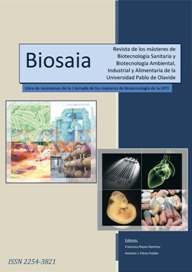Improving Ammonia Production Using Zeolites
Palabras clave:
Ammonia, Production, ZeolitesResumen
Motivation: Ammonia production is one of the most important industries in the world, being of capital importance in agriculture as source of nitrogen for growing plants. However, ammonia production depends on plentiful supplies of energy and large percentages of production are not achieved [1]. In order to overcome this issue, an alternative production method is highly necessary. In this work we explore the use of zeolites to improve the ammonia production method. Zeolites are molecular sieves commonly used in chemical industry as catalyst to its size pores, in agriculture as soil conditioner and to soften water by ion exchange.
Methods: The ammonia formation reaction in zeolites has been explored in this work using Monte Carlo simulations in the Grand Canonical ensemble (GCMC). All simulations have been carried out using the simulation code RASPA [2]. Atomic interactions were modeled with Lennard-Jones parameters; while electrostatic interactions have been considered through coulombic potentials and the application of Ewald summations [3]. In this work we selected BEA, FAU, FER, ITQ-29,MFI and MOR zeolites because they are the most commercialized and available zeolites for industrial processes like this.
Results: Our results show the yield improvement of the ammonia synthesis reaction using zeolites. At 873 K and 1000 bar, we improve the ammonia production since 35% (reaction in the bulk) to 50% (using zeolite); it represents 40% improvement in the yield of the reaction. Using BEA, at 550 K and 200 bar, we have obtained a yield above 95%. In some cases we have obtained results equivalent to a temperature change of 100 ºC. FAU produces a greater effect than FER; this is due to its topology of cages that it is more effective than channels.
Conclusions: In this work we have explored the use of zeolites for the improvement of the ammonia formation reaction. We have studied 6 well-known zeolites. Results obtained in this work represent an increase of 44% respect to the reaction carried out nowadays. This technique could be one of the technologies used in the future to help this industry in all aspects; yield, environmental and economic. The next step would be to improve the use of these zeolites, an example of improvement could be the incorporation of cations to the system in order to obtain a better performance of the zeolite.





